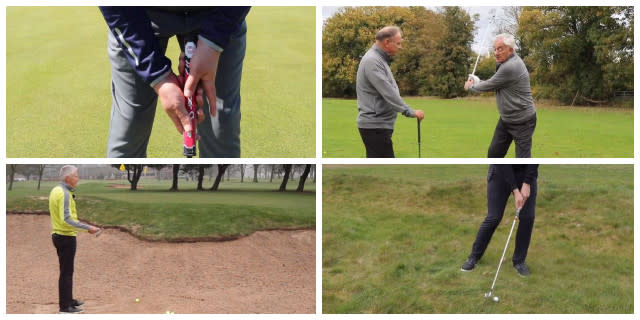Why do greens get aerated?
It’s not too much of an exaggeration to say that there isn’t much in the world of turf management that signifies how much golfers don’t know about the work of their greenkeepers, more than aeration.
To many golfers it’s a complete mystery and, worse than that, it’s one that seemingly reduces the playing quality of a green.
This disruption is only temporary, however, and the benefits make it more than worthwhile.
Firstly, there’s an important point to consider. Did you know that grass doesn’t actually grow in soil? It actually grows in the air pockets between the particles of soil.
So grass needs soil that has air pockets running throughout it, otherwise it can’t grow.
However, regular playing on a course compacts the soil, like a huge sponge made of soil and turf. Too much compaction and you’ll find the grass becomes squeezed and suffocated – which can cause serious health problems for turf that is already put under stress due to close mowing.
Compaction also leads to poor drainage, meaning flooding becomes a big problem.
So to counter this, your greens team will put into place a programme of aeration. By spiking holes into the ground, it increases the amount of space within the soil. This has the effect of increasing oxygen levels, allowing the root system to take a deep breath.
Finer grass species are able to survive at shorter cuts and provide faster green speeds, but they have the side effect of producing a layer of organic material between the turf and the soil surface, known as thatch. This layer can cause problems that result in reduced turf quality, and so aeration slices through this layer, reducing its impact and improving the health of the turf.
Due to the incredible health benefits of successful aeration, it is among the most important practices available to greenkeepers, and a little patience from golfers is required during periods when the work is underway.
For more more videos in this series visit: www.golfshake.com/improve/tag/BIGGA/
This video was filmed in association with Golfshake and BIGGA (The British and International Golf Greenkeeping Association) at the Belfry in March 2017.
BIGGA represents the Nation's greenkeepers and works hard through education and training to raise standards in golf course management throughout the greenkeeping profession. To find out more about the work BIGGA do visit: www.bigga.org.uk

Related Content: BIGGA
Related Video
Comments
British and International Golf Greenkeepers Association
BIGGA is dedicated to the continuing professional development of its 5,700 members, BIGGA works hard through education and training to raise standards in golf course management throughout the greenkeeping profession.
More Features




















